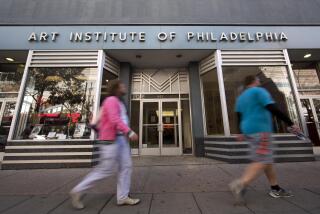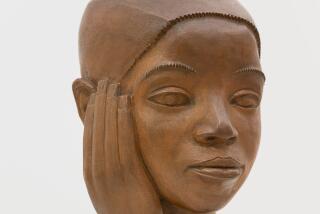Black graduates make up just 1% of ArtCenter alumni. Can an exhibition fix that?
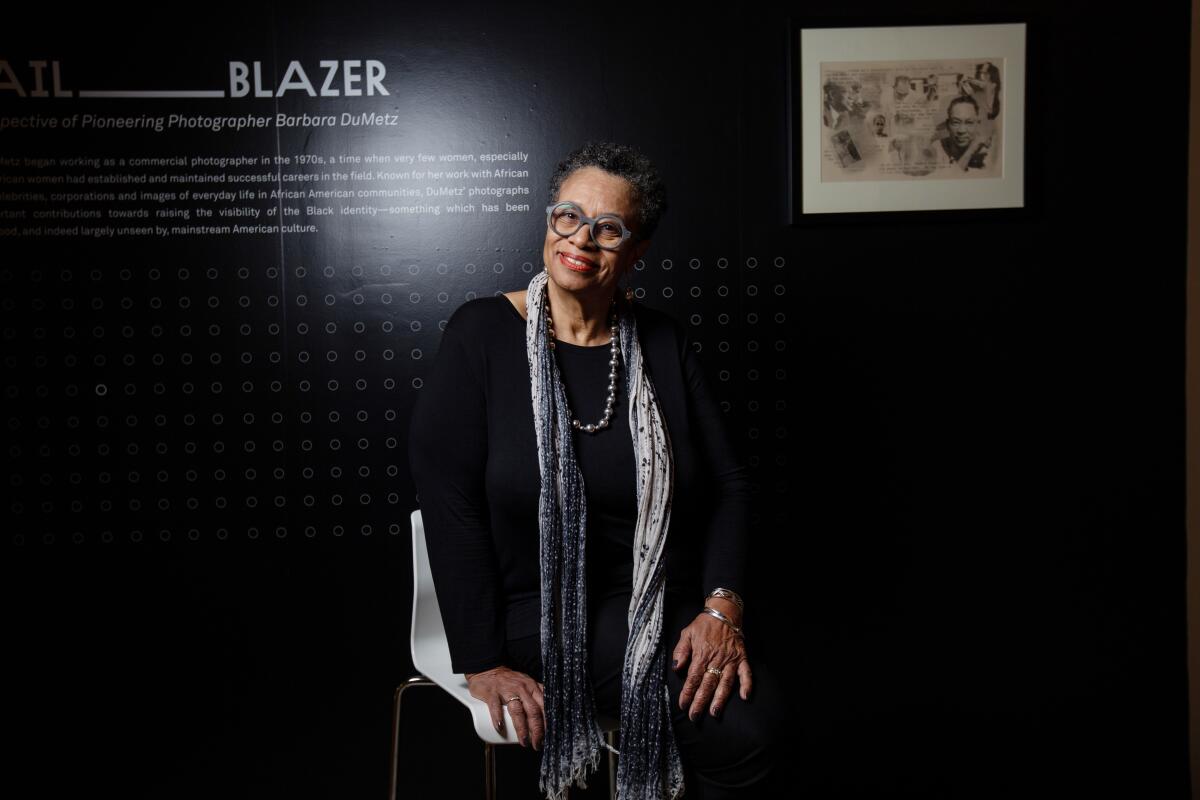
Three hundred. That’s the estimated number of black students who have graduated from the Pasadena-based ArtCenter College of Design in its 90-year history.
The statistic — that black students make up only about 1% of all alumni — was inspiration for the school’s exhibition “90/300: A Measure of Representation, in Celebration of Cultural Influence.”
The exhibition includes three separate projects: a video survey of alumni work and interviews produced by Elizabeth Gray Bayne, a retrospective of commercial photographer Barbara DuMetz, and a group exhibition curated by mixed-media, sculpture and installation artist Devin Troy Strother.
Strother was among the alumni who organized “90/300” in collaboration with the school’s Center for Diversity, Equity and Inclusion in Art and Design, which launched in 2018. As ArtCenter’s Vice President and chief diversity officer Aaron Bruce said, he realized the school “really didn’t have a lot of branding that was facing the African American community.”
The exhibition was a way to “inspire the next generation of young African American artists and designers,” Bruce said. “They really needed access to images and individuals that reflected their identity and that was incredibly difficult to find in one location.”
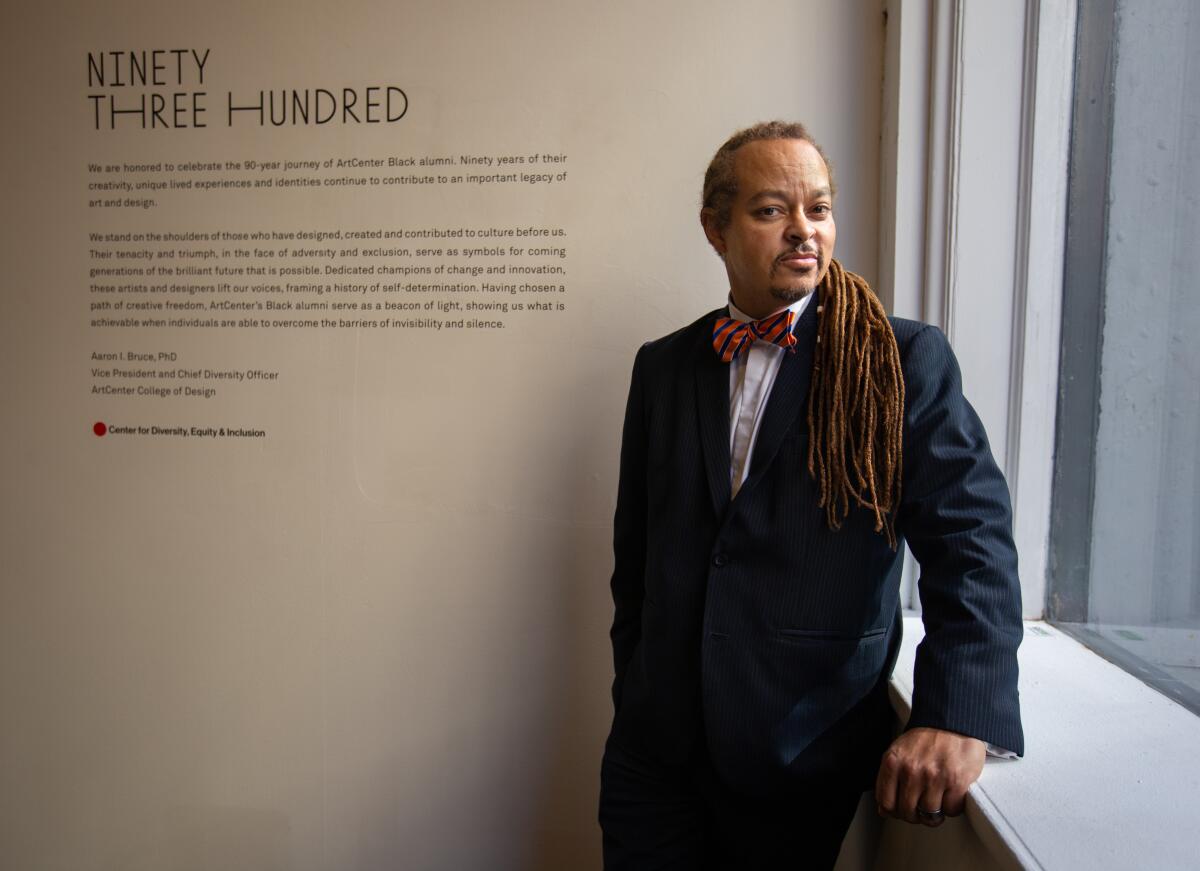
Strother began working on the exhibition last fall, researching the list of black graduates and culling it down to active artists who practiced in L.A.
Although the show opened in mid-February, Strother pushed for it to go up another time, comparing the staging of a black art show during Black History Month to a “back-handed compliment.”
“The biggest months within the art world are September, October, November and January. ... Why not reserve this big event for one of those months, instead of the shortest month of the year,” Strother said.
The exhibition is one of the first at the school’s new downtown space, which opened last year in what had been the Main Museum, Bruce said. “It just so happened that it was in February. But I also think it lends itself to exhibiting the history of African Americans in a way that has typically not been seen.”
The exhibition is also a way to address some of the myths around the viability of art as a career, which could be one reason why the black student population remained low.
“The stereotype associated with being a starving artist may linger in the minds of many African American families,” Bruce said. “Although many African American artists and designers may have wanted to go to art school, they may have been deterred from pursuing a career in art design by family members or friends, or guidance counselors or teachers who said no.”
“One of the reasons why we’re also doing this exhibition is to actually demonstrate that there are people who are African American who have had thriving careers,” he added.
Barriers within the school system itself may also have kept black students away.
Strother wasn’t shocked by the statistic, adding that the school had only recently begun taking steps toward inclusion. He recalled an early 2000s experience in high school when an ArtCenter recruiter discouraged him from applying. “It was like they were very much an elitist school and they wanted to keep it this private institution,” he said.
He also recounted experiences as a student — not having a black instructor, not learning to paint figures with darker skin tones — that made him feel othered.
For Strother, curating the ArtCenter exhibition was a way to show “you can be young and black and actually have a working career within the art world and still be critical of the way institutions work,” Strother said. “You don’t have to tiptoe around things that are inconsistent.”
As a student in the 1990s, artist Edgar Arceneaux, whose work is featured in the exhibition, started a black student union with another student.
“We were petitioning for greater representation of black art … to try to get more people of color to be on faculty but also just to celebrate with each other since there were a few students there of color.”
Although he called his ArtCenter education “exceptional,” Arceneaux felt that true change should come from inside the school system. “They should do this themselves, but the truth is most of the time these cultural shifts that happen on campuses are generated by students,” he said.
A 1973 graduate of ArtCenter, DuMetz said she was the only black woman in her photography program at the time. She didn’t “remember any adverse situation or treatment,” she said. “I never really felt discriminated against.”
She credited ArtCenter with launching her 40-year career in commercial photography, where she’s worked with national brands including Coca-Cola and Kraft and shot black entertainers and artists including Miles Davis and Ernie Barnes.
“To be honored like this, and of course ArtCenter would be the perfect place to have it done because this is the kind of work they taught photographers ... to get work out there and up in the world,” DuMetz said. “I’ve been waiting to tell this story for a long time.”
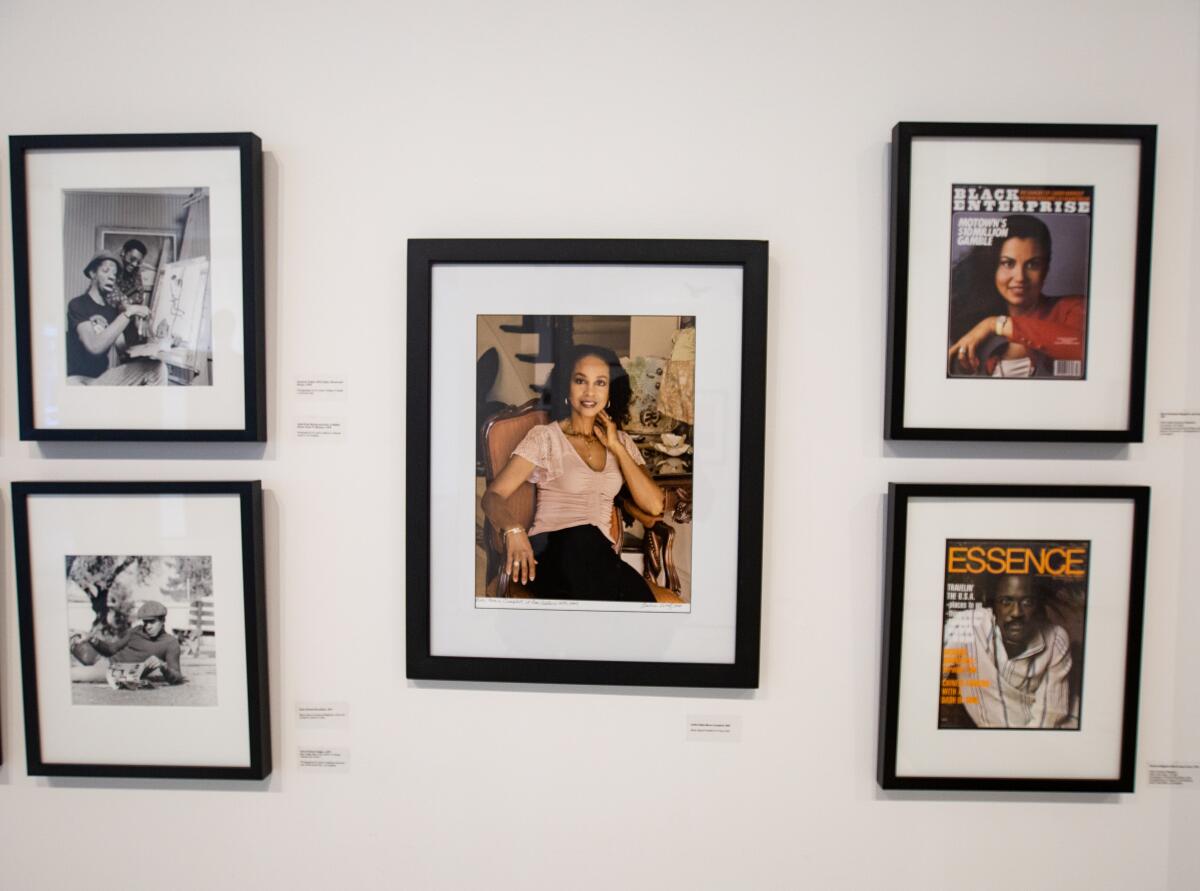
According to ArtCenter’s most recent demographic breakdown in 2018, black students made up 2% of the student body.
Bruce acknowledged that the numbers could be much higher, and he sees the exhibition as one step toward bringing in more black students to the school.
The Center for Diversity, Equity and Inclusion in Art and Design also launched other initiatives including working with the school to increase financial resources for students, starting conversations around culturally responsive critique in classrooms, and planning a study-abroad program in Kenya.
“I don’t think we’re hiding from the fact that those numbers are low,” Bruce said. “It’s important to be transparent and upfront and honest about the history of the center.”
'90/300: A Measure of Representation, In Celebration of Cultural Influence'
Where: ArtCenter DTLA, 114 W. 4th St., Los Angeles
When: Noon-5 p.m. Tuesday-Saturday, through Mar. 13
Admission: Free
Info: artcenter.edu
More to Read
The biggest entertainment stories
Get our big stories about Hollywood, film, television, music, arts, culture and more right in your inbox as soon as they publish.
You may occasionally receive promotional content from the Los Angeles Times.
